Acient Korea Casting Technology
King Seongdeok Divine Bell (Emile Bell, National Treasure No. 29)
| Production Start | 737 A.D. (Unified Silla) | Production Period | 34 years | Year of Completion | 771 A.D. |
|---|---|---|---|---|---|
| Weight | 18.9ton | Material | Bronze | Method | Casting |
| Height | 365.8cm | Main Components | Cu:85~87% | Sn:12~14% |
King Gyeongdeok of Silla tried to make a bell to announce virtues of his father, King Seongdeok, but failed. Since then, King Hyegong completed it in 771 and called it as 'King Seongdeok Divine Bell'. This bell is also called as 'Bongduksa Bell' because it was first hung in Bongduk Temple, and it is also known as' Emile Bell' after the legend of the crying of a baby who was sacrificed in it.
A sound tube is at the top of the bell, which helps sound vibration and is the unique structure found in bronze bells in Korea only. The hook of the bell, dragon hook is in the shape of a dragon's head.
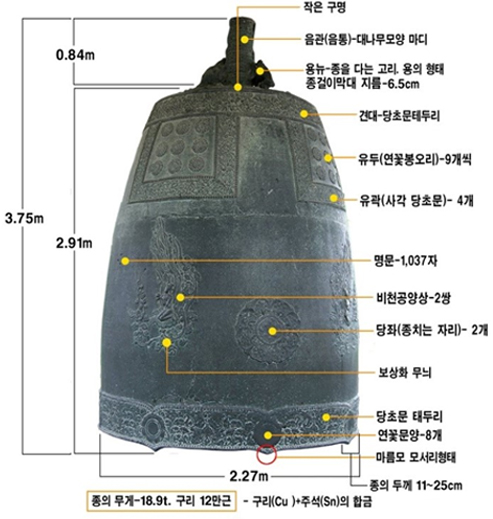
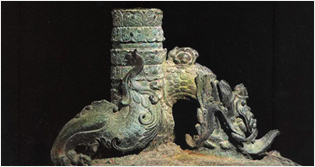
< Dragon Hook and Sound Tube >
It is presumed that a kind of the lost wax process based on wax was used. The waist of the dragon is designed to withstand the load no less than 19 tons.
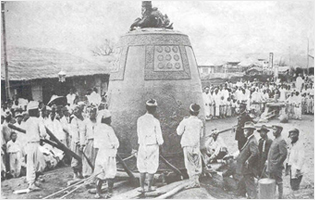 < King Seongdeok Divine Bell (Photo taken in Chosun Dynasty) >
" />
< King Seongdeok Divine Bell (Photo taken in Chosun Dynasty) >
" />
< King Seongdeok Divine Bell (Photo taken in Chosun Dynasty) >
Buddhist Bell Casting Estimate Drawing
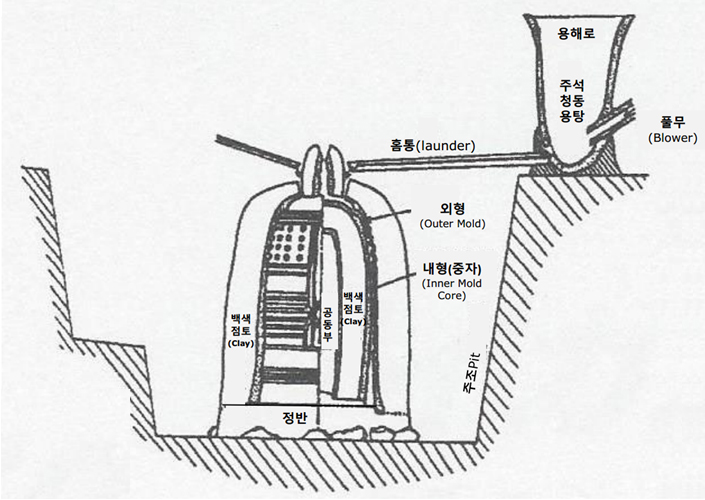
< Buddhist Bell Casting Estimate Drawing >
| Name | Chemical Composition (Wt%) | |||||||||
|---|---|---|---|---|---|---|---|---|---|---|
| Cu | Sn | Pb | Zn | S | Fe | Ni | ||||
| Bongduksa Bell | Top | 84.39 | 11.21 | 0.23 | 0.009 | 0.22 | 0.64 | 0.07 | ||
| Middle | 78.56 | 15.51 | 0.45 | 0.009 | 0.22 | 0.30 | 0.07 | |||
| Bottom | 83.13 | 12.98 | 0.14 | 0.016 | 0.22 | 0.61 | 0.08 | |||
| JIS | CAC 503B |
84~88 | 12~15 | <0.3 | <0.3 | <0.2 | <1.0 | |||
Its chemical composition is similar to that of modern materials. Considering the content analyzer was not available, our ancestor's technical ability was amazing again how the content composition was controlled to this level.
Mold Production Technique (Estimate)
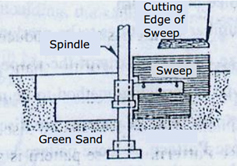
Sweep pattern
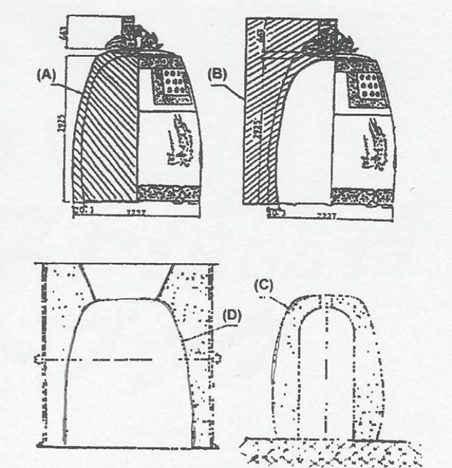
내Inner and Outer Sweeping Molds (Sweeping Mold)
(A) Outer mold (B) Inner Mold
(C) Molded inner mold(core) (D) Outer mold
(A) Outer mold
(B) Inner mold
(C) Molded inner mold(core)
(D) Outer Mold








